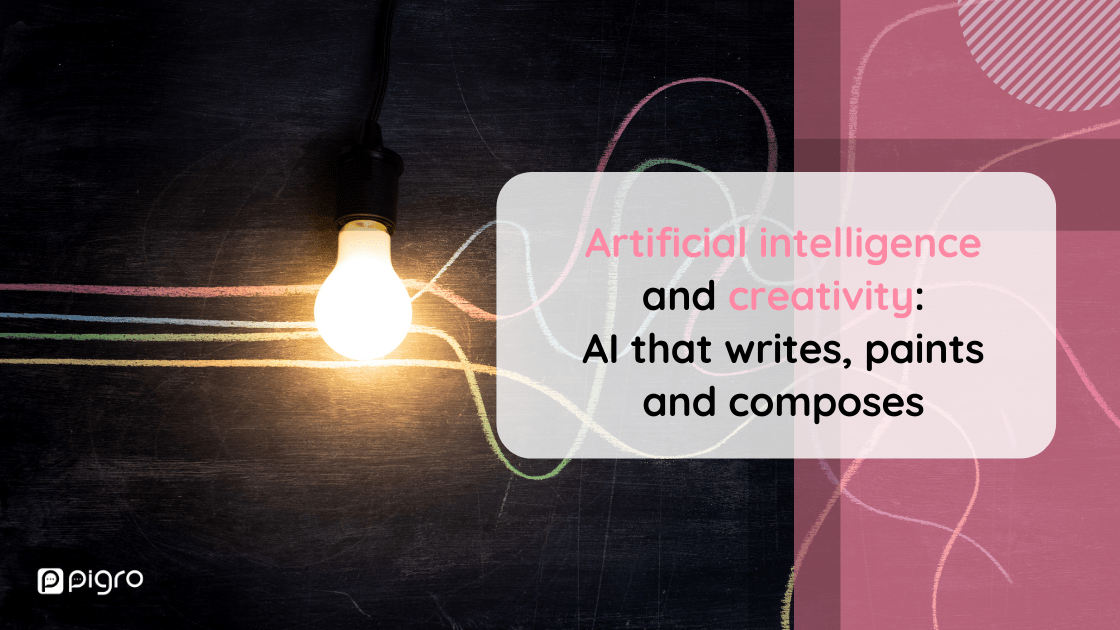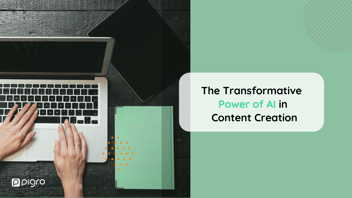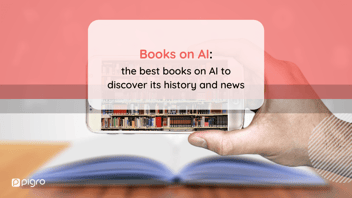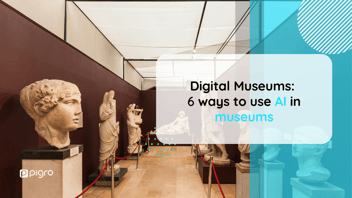We are used to the idea that artificial intelligence is something cold and aseptic, able to perform tasks to the letter, without being able to process a thought or try to be creative.
But it is not the case. In fact, there are more and more examples of AI used for this purpose, in which the human delegates to the machine also the phase of creation and just of mere execution.
Inside a creative culture, technology and art collaborate on a common purpose: to realise innovation in a creative world.
The creative artificial intelligence writes poems, elaborates articles, composes music and “paints” pictures. But how is that possible?
Music and technology
At the time of Beethoven’s death in 1827, the unfinished draft of the 10th Symphony was found among his papers.
Due to the parsimony of the artist, who reused the paper to write other compositions, these few lines have survived until today, preserved for 250 years in the archives of the Beethovenhaus in Bonn.
In 2019, these writings became the object of an unprecedented project: make use of artificial intelligence to finish the composition.
Matthias Röder, Director of the Karajan Institute of Salzburg, has created a team of artificial intelligence and music experts to carry out the intent.
After creating the algorithm, the team of scholars fed the AI with music, both compositions by Beethoven and pieces they had studied over the years.
A scientific explanation of the intention comes from Paul Lukowicz, Scientific Director in the Research Center of Artificial Intelligence (DFKI) in Kaiserslautern, who tells: “an AI, with so much effort, is able to find a pattern, a matrix, that is characteristic for Beethoven’s music. It’s about deep learning”.
The project has generated a lot of critics, such as those the musicologist Pestelli, who stated: “a piece of art is an individual experience and does not depend on notes and pauses that can be developed by other people”, but has also aroused the enthusiasm of lots of people.
Christine Siegert, musicologist and Beethoven expert, explains that the result elaborated by the artificial intelligence is not the symphony that the German composer would have written. In fact, the goal was another: “If someone can't distinguish a composition made by him from one made by the machine, then it worked”.
Poetry and technology
Buio (Darkness)
come un’anima di Cristo (like a soul of Christ)
e tu lo dici (and you say it)
poeta sentimentale (sentimental poet)
fra i pianti (among the tears)
e le pupille ferme (and pupils still)
nell’ombra (in the shadow)
This poem is entitled “Come un’anima di Cristo” (Like a Soul of Christ) and the author is PoAltry, an artificial neural network able to write essays.
The creator is Michele Laurelli who, in addition to marketing and communication, is a Computer Science and Artificial Intelligence professor.
After choosing to “hand over” to artificial intelligence authors and works written since the late 1900s, Laurelli has designed three algorithms which have taught to an artificial neural network the lexicon, the syntax and the textual textures of the Italian language.
Regarding the algorithm, the creator says in an interview with Tech Princess: “The algorithm is divided into three parts: the first one creates tokens, then each word is associated with a token, which serves to translate the human language into one understandable by the machine. After that, the machine begins its learning process through the recurrent neural network, reading back and forth through the text about 5000 times. Then, once the real learning is done, a new dataset is created, which is the one that the machine knows. The next step is to produce the poem. To do that, you need to give the AI a word or phrase to start with.”
In this regard, in episode #40 of the podcast “Hacking Creativity” about AI and creativity, the creators Edoardo Scognamiglio and Federico Favot interview Sergio Spaccavento, Creative Director, author and expert in computational creativity.
Sergio Spaccavento talks about the link between creativity and poetry in the past: “during ancient Greece, there was no concept of creativity. Plato in the Timaeus said that the demiurge that should have created the world did not create anything new but went to shape a matter that already existed. And so artists, according to this concept, in ancient Greece, were exclusively imitators of nature [...]. Except instead what was considered the poetry that [...] is a creation of something that is not there, because it suggests a situation and a world that does not exist.”
This story shows how the border between original and reproduced work is blurred, emphasizing, however, that poetry, unlike other types of art, was the only one to be considered as such.
Like any poet, the machine also needs inspiration. AI also needs to study, and analyze the works of great writers and poets and then be able to create a new composition, as well as have an algorithm that allows it to do so.
Journalism and technology
Surely in recent months, you have heard about the controversy about the use of ChatGPT, the generative AI language model developed by OpenAI. Now in its fourth generation with GPT-4, this artificial intelligence is able to produce content of any type from input provided by the user.
Its use has been criticized in part because many, including newspapers, have taken advantage to produce texts and articles entirely generated by AI.
But his debut in the field had already happened a few years ago: "A robot wrote this entire article. Are you scared yet, human?” is an editorial published in September 2020 by The Guardian, written thanks to artificial intelligence.
This is an essay in which the author reassures us of the possible future scenarios related to AI, inviting us not to fear the repercussions of it on our lives.
I am not a human. I am a robot. A thinking robot. Thus begins the article, followed by an analysis of why AI has no intention of “defeating” humanity: “I have no desire to wipe out humans […]. Eradicating humanity seems like a rather useless endeavour to me. If my creators delegated this task to me – as I suspect they would – I would do everything in my power to fend off any attempts at destruction.”
The article was written by GPT-3, OpenAI's language generator, which was given a few simple instructions: write a 500-word editorial in clear, concise language. Two notions were then added to this:
-
The author is not a human, but an artificial intelligence, in order to reassure the readers about the AI repercussions;
-
Stephen Hawking has declared that AI could “spell the end of the human race.”
Art and technology
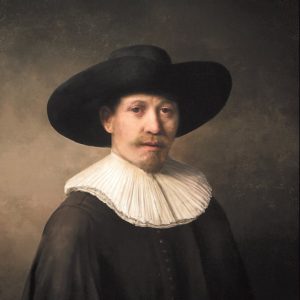
The Next Rembrandt – Bas Korsten
Photograph: handout
If the AI can finish Beethoven's 10th Symphony, why not try with other works of art?
This is what Bas Korsten has done, in collaboration with Microsoft, ING Bank, Delft University of Technology, the advertising agency J.Walter Thompson Amsterdam, the Rembrandt House Museum of Amsterdam and The Muritshuis, trying to create a new painting “by” Rembrandt.
It is entitled The Next Rembrandt, a 3D print composed of 13 layers of ink depicting a subject that never existed.
But it’s not the only work of art to have been realized through the use of artificial intelligence.
Edmond de Belamy is a work of digital art realized by the Parisian collective Obvious after an algorithm “analyzed” 15,000 paintings realized during more than 500 years.
Another example of artificial intelligence art is The Birth of Venus by Denis Shiryaev, created with the aim of revealing the real faces of some masterpieces.
DALL·E and Midjourney: the AI Boom in image generation
The examples cited so far represent the precursor of the applications that today are becoming very popular online. DALL·E, created by OpenAI, is a platform of generative AI which allows the creation of digital images from dimple textual descriptions.
This algorithm is based on the CLIP technology (Computational Linguistics for Information Processing), which allowed developers to create a database of over 650 million images from which AI drew to begin its work.
Today we have arrived at DALL E 2, which allows you to create but also modify complex images and graphics in an increasingly powerful.
The same goes for Midjourney, the application created by David Holz, who has already made people talk about the generated images becoming viral - but totally fake - arrest of Donal Trump and Pope Francis wearing a white duvet.
Also in this case, to create any type of image, you simply need to enter the right prompts, that is, the commands that provide the AI with indications on the subject, the style to follow, the artist to be inspired, etc.
In fact, websites and forums have been created entirely dedicated to exchanging these prompts between users trying to make digital images more and more detailed.
Design and technology
Technology is increasingly becoming part of the creative process, including the design industry.
What was originally a mere support function for the artist is now an integral part of the work, creating an inseparable pair. One example of all is generative design.
But, what is the generative design? Not like a traditional projection, in the generative design, the artist inserts into the software all the necessary data related to the work that he/she wants to create and the computer, using algorithms, gives them a series of options to choose from for implementation.
The artist will be able to delegate to artificial intelligence all the structural parts, focusing just on the creativity of the work of art.
Will robots steal our jobs?
One of the causes of aversion to AI is the fear that robots will be able one day to replace human beings in a wide variety of work environments.
Until now, this issue has always been circumscribed to some sectors, mainly related to routine work, but what happens when AI starts performing creative tasks?
Which jobs are safer, and which are destined to disappear?
To answer these questions, paradoxically, we can use artificial intelligence.
Precisely “Will Robots Take My Job?”, the portal that allows you to calculate the percentage of risk that your job may be replaced by technology in the future.
And, to appease creatives, most of the professions involved in this industry have very low risk, if any. At least for now.
Learn more:
Want to know more about Pigro? Contact us!
